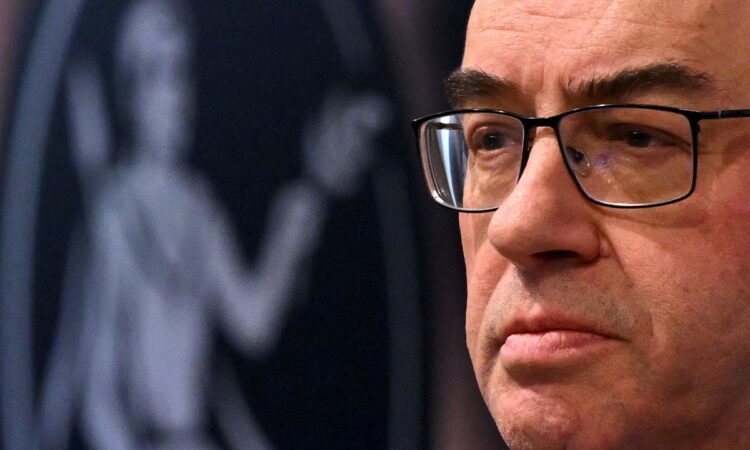

Even just a few days ago ,the route for markets seemed clearer.
Inflation was under control nearly everywhere that matters, even if the Fed was making noises suggesting otherwise. That was just the US central bank chief Jay Powell making sure we didn’t get ahead of ourselves.
In the UK, May inflation figures would come in at 2% or lower, City economists were sure, setting the scene for rate cuts that would take borrowing costs from 5.25% at present to 4% by Christmas.
All this might come too late to be of any use to Rishi Sunak’s election chances — but it was as nailed-on as these things ever get.
That fall in rates would see investors switch out of bonds, which would be paying lower returns, and into shares, giving stock markets, especially the one in London, a much-needed boost. Talk about Shell or other FTSE 100 giants decamping to the US in search of higher valuations could be safely put to bed.
But yesterday there was an American spanner in the works in the form of inflation still at 3.5%.
Jay Powell, it turns out, wasn’t kidding around. Market expectations for interest rate cuts in the US quickly shifted from June to September.
Middle East tensions show little sign of abating, which means oil prices that are volatile at best and heading higher most likely, only putting further pressure on inflation.
All of which means some economists are now predicting no rate cuts at all this year, a marked about face.
Larry Summers, the former US Secretary of the Treasury whose words carry weight whether they should or not, said: “You have to take seriously the possibility that the next rate move will be upwards rather than downwards.”
In a note to clients today, Simon French at Panmure Gordon said: “Until the March MPC we viewed August as the most likely date for the first Bank of England rate cut. Then spooked by a dovish vote and associated MPC commentary we brought that forward to June. That increasingly looks like it was a mistake.”
He’s not alone.






